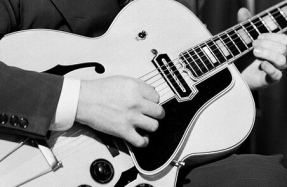ROCK SOLID


Throughout the 1950s, Gibson continuously revisited and reworked its Les Paul range. One of the most significant changes occurred in 1958 when, in response to customer requests, Gibson modernised its single-cutaway Les Paul Junior, TV and Special models with double-cutaway body designs. Featuring rounded horns, the revised Junior and TV guitars began shipping that year, followed by the Special in early ’59. Then in late ’59 Gibson rebranded the Les Paul Special and Les Paul TV; renamed the SG Special and SG TV respectively, it marked the beginning of the end for Gibson’s original Les Paul range of solidbody electrics that began in 1952 with the Les Paul Model (Goldtop) .
By 1961, these rounded double-cutaway guitars, along with the Les Paul Standard/ ’Burst and Les Paul Custom’s classic single-cutaway form, had been superseded by a profoundly different design sporting a thin bevelled body with pointed double cutaways. Although this unmistakable profile is commonly referred to as an ‘SG’, it wasn’t until 1963 – following the expiration of Les Paul’s endorsement contract in 1962 – that the Junior, Standard and Custom joined the TV and Special in receiving their official SG model designation.
It was a notably creative period in the electric guitar building industry. As the market gathered momentum in the wake
You’re reading a preview, subscribe to read more.
Start your free 30 days



